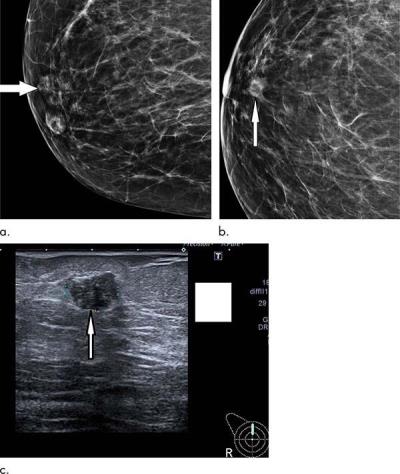Digital Mammography Increases Breast Cancer Detection
Higher sensitivity of digital mammography substantially detects invasive cancers and DCIS.

The shift from film to digital mammography increased the detection of breast cancer by 14 percent overall in the United Kingdom without increasing the recall rate, according to a study appearing in Radiology.
“Image quality with digital mammography is improved over that of screen film mammography,” said radiologist and study coauthor Rosalind M. Given-Wilson, MBBS, from St. Georges University Hospitals NHS Foundation Trust, London. “In particular, digital mammography provides the ability to visualize calcifications and see through denser tissue, and it allows the reader to adjust the image.”
Dr. Given-Wilson and colleagues assessed digital mammography’s impact on cancer detection using data from the 80 facilities of the English National Health Service Breast Cancer Screening Program. The huge trove of data combined with estimates of digital mammography usage enabled the researchers to measure the effect of digital mammography in 11.3 million screening exams in women between the ages of 45 and 70.

Figure 2: Routine screening mammogram in a 67-year-old woman shows subtle 12-mm asymmetric density with ill-defined margins representing small grade 3 cancer (arrow) on (a) lateral oblique view and (b) cranio-caudal view; it is difficult to see even on digital mammogram in a nondense breast. Subsequent clinical examination was normal. (c) US confirmed 12-mm irregular hypoechoic mass (arrow). Patient underwent wire-guided surgical excision and sentinel node biopsy. Final histologic examination showed 14-mm grade 3 invasive ductal carcinoma, which was node negative.
Higher Sensitivity of Digital Mammography Did Not Increase Recall Rate
The overall cancer detection rate was 14 percent greater with digital mammography, with substantially higher detection of grade 1 and grade 2 invasive cancers.
At first screening exams for women aged 45 to 52, digital mammography increased the overall detection rate by 19 percent. Importantly, the higher sensitivity of digital mammography did not increase the recall rate.
“This improvement happened in the absence of other changes in the English screening program, such as a change in recall rate or introduction of computer-aided detection, so we can be clear that the increased rate of detection is due to the change in technology,” Dr. Given-Wilson said.
Digital mammography increased the detection of some types of cancers more than others. For instance, digital mammography significantly increased the detection of ductal carcinoma in situ, or DCIS, at both first screens and subsequent screens.
“These results confirm that digital mammography is superior to screen film mammography in finding invasive cancers and DCIS,” Dr. Given-Wilson said. “Women are more likely to have a cancer detected with a digital mammogram.”
While digital mammography improved detection of grade 1 and 2 cancers, the researchers found no improvement in the detection of grade 3 invasive cancers.
The researchers are looking at the radiological features of grade 3 cancers on digital mammography to see if optimizing the image for these lesions can aid detection. They are also studying the relationship between grade 3 cancers and subsequent interval cancers, or cancers that appear between screenings.